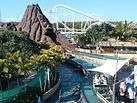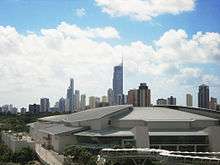Gold Coast, Queensland
| Gold Coast Queensland | |||||||||
|---|---|---|---|---|---|---|---|---|---|
Top from left: Nerang River and the Surfers Paradise skyline, Harbour Town, QLD-NSW border marker at Coolangatta, Q1, Purling Brook Falls in Springbrook National Park, Bermuda Triangle (Sea World), Main Beach | |||||||||
 Gold Coast | |||||||||
| Coordinates | 28°01′0″S 153°24′0″E / 28.01667°S 153.40000°ECoordinates: 28°01′0″S 153°24′0″E / 28.01667°S 153.40000°E | ||||||||
| Population | 507,642 (2010)[1] (6th) | ||||||||
| • Density | 972/km2 (2,520/sq mi) | ||||||||
| Area | 414.3 km2 (160.0 sq mi) | ||||||||
| Time zone | AEST (UTC+10) | ||||||||
| Location | 66 km (41 mi) SSE of Brisbane[2] | ||||||||
| LGA(s) | City of Gold Coast | ||||||||
| State electorate(s) | |||||||||
| Federal Division(s) | |||||||||
| |||||||||
Gold Coast is a coastal city in the Australian state of Queensland, approximately 66 kilometres (41 mi) south-southeast of the state capital Brisbane and immediately north of the border with New South Wales. With a population of 494,501 in the 2011 Census, the Gold Coast is the sixth-largest city in Australia, making it the largest non-capital city, and the second-largest city in Queensland. The city is counted as part of the Gold Coast–Tweed Heads Significant Urban Area (pop. 624,918,[3] 2015) and the larger South East Queensland Region.[4]
The first settlement in what is now South East Queensland was as a penal colony at Redcliffe. The Gold Coast region remained largely uninhabited by Europeans until 1823 when explorer John Oxley landed at Mermaid Beach. The hinterland's red cedar supply attracted people to the area in the mid-19th century. Later in 1875, Southport was surveyed and established and grew a reputation as a secluded holiday destination for wealthy Brisbane residents.
The Gold Coast region grew significantly after the establishment of the Surfers Paradise hotel in the late 1920s. The area boomed in the 1980s as a leading tourist destination and in 1994, the City of Gold Coast local government area was expanded to encompass the majority of Gold Coast's metropolitan area, becoming the second most populous local government area in Australia after the City of Brisbane. Gold Coast is today a major tourist destination with its sunny subtropical climate, surfing beaches, canal and waterway systems, its high-rise dominated skyline, theme parks, nightlife, and rainforest hinterland, making tourism one of its most significant industries. Gold Coast will host the 2018 Commonwealth Games.[5]
History
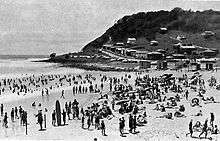
.jpg)
Lieutenant James Cook became the first white settler to note the region when he sailed along the coast on 16 May 1770 in the HM Bark Endeavour. Captain Matthew Flinders, an explorer charting the continent north from the colony of New South Wales, sailed past in 1802. Escaped convicts from the Moreton Bay penal settlement hid in the region. The region remained largely uninhabited by Europeans until 1823 when explorer John Oxley landed at Mermaid Beach, which was named after seeing a cutter named Mermaid. The hinterland's red cedar supply attracted people to the area in the mid-19th century.
A number of small townships developed along coast and in the hinterland. The western suburb of Nerang was surveyed and established as a base for the industry and by 1870 a town reserve had been set aside.[6] By 1873, the town reserve of Burleigh Heads had also been surveyed and successful land sales had taken place.[7] In 1875, the small settlement opposite the boat passage at the head of the Nerang River, known as Nerang Heads or Nerang Creek Heads, was surveyed, renamed Southport with the first land sales scheduled to take place in Beenleigh.[8] Southport quickly grew a reputation as a secluded holiday destination for wealthy Brisbane residents.
Gold Coast was originally known as the South Coast (because it was south of Brisbane). However, inflated prices for real estate and other goods and services led to the nickname of "Gold Coast" from 1950.[9][10][11][12][13] South Coast locals initially considered the name "Gold Coast" derogatory.[14] However, soon the "Gold Coast" simply became a convenient way to refer to the holiday strip from Southport to Coolangatta.[15][16][17][18][19] As the tourism industry grew into the 1950s, local businesses began to adopt the term in their names, and on 23 October 1958 the Town of South Coast was renamed Town of Gold Coast.[20] The area was proclaimed a city less than one year later.[21]
In 2007, Gold Coast overtook the population of Newcastle, New South Wales to become the sixth largest city in Australia and the largest non-capital city.[22]
Geography
The Gold Coast is approximately half covered by forests of various types. This includes small patches of near-pristine ancient rainforest, mangrove-covered islands, and patches of coastal heathlands and farmland with areas of uncleared eucalypt forest. Of the plantation pine forests that were planted in the 1950s and 1960s, when commercial forest planting for tax minimisation was encouraged by the Commonwealth government, tiny remnants remain.[23]
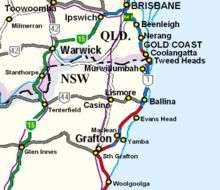
Gold Coast City lies in the southeast corner of Queensland, to the south of Brisbane, the state capital. The Albert River separates Gold Coast from Logan City, a suburban area of Brisbane.
Gold Coast City stretches from Beenleigh and Russell Island to the border with New South Wales (NSW) approximately 56 km (35 mi) south, and extends from the coast west to the foothills of the Great Dividing Range in World Heritage listed Lamington National Park.
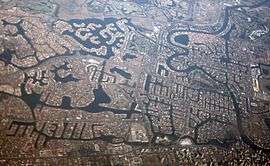
The southernmost town of Gold Coast City, Coolangatta, includes Point Danger and its lighthouse. Coolangatta is a twin city with Tweed Heads located directly across the NSW border. At 28°10′00″S 153°33′00″E / 28.1667°S 153.55°E, this is the most easterly point on the Queensland mainland (Point Lookout on the offshore island of North Stradbroke is slightly further east). From Coolangatta, approximately forty kilometres of holiday resorts and surfing beaches stretch north to the suburb of Main Beach, and then further on Stradbroke Island. The suburbs of Southport and Surfers Paradise form Gold Coast's commercial centre. The major river in the area is the Nerang River. Much of the land between the coastal strip and the hinterland were once wetlands drained by this river, but the swamps have been converted into man-made waterways (over 260 kilometres (160 mi) in length[24] or over 9 times the length of the canals of Venice, Italy) and artificial islands covered in upmarket homes. The heavily developed coastal strip sits on a narrow barrier sandbar between these waterways and the sea.
To the west, the city borders a part of the Great Dividing Range commonly referred to as the Gold Coast hinterland. A 206 km2 (80 sq mi) section of the mountain range is protected by Lamington National Park and has been listed as a World Heritage area in recognition of its "outstanding geological features displayed around shield volcanic craters and the high number of rare and threatened rainforest species".[25] The area attracts bushwalkers and day-trippers.
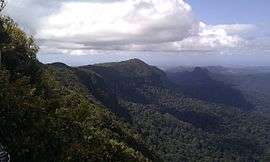
Urban structure
Gold Coast includes suburbs, localities, towns and rural districts.

The declaration of Southport as a Priority Development Area (PDA) and new investment into the CBD is driving transformative change and creating new business and investment opportunities. At the heart of the Gold Coast is the emergence of a CBD that is revitalised, dynamic and vibrant; a CBD that will position the Gold Coast as a globally competitive business, investment and lifestyle destination.
Waterways
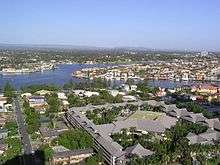
Waterfront canal living is a feature of Gold Coast. Most canal frontage homes have pontoons. The Gold Coast Seaway, between The Spit and South Stradbroke Island, allows vessels direct access to the Pacific Ocean from The Broadwater and many of the city's canal estates. Breakwaters on either side of the Seaway prevent longshore drift and the bar from silting up. A sand pumping operation on the Spit pipes sand under the Seaway to continue this natural process.
Residential canals were first built in Gold Coast in the 1950s and construction continues. Most canals are extensions to the Nerang River, but there are more to the south along Tallebudgera Creek and Currumbin Creek and to the north along the Gold Coast Broadwater, South Stradbroke Island, Coomera River and southern Moreton Bay. Early canals included Florida Gardens, Isle of Capri which were under construction at the time of the 1954 flood. Recently constructed canals include Harbour Quays and Riverlinks completed in 2007. There are over 890 kilometres (550 mi) of constructed residential waterfront land within the city that is home to over 80,000 residents.
Beaches
The city consists of 70 kilometres (43 mi) of coastline with some of the most popular surf breaks in Australia and the world including, South Stradbroke Island, The Spit, Main Beach, Surfers Paradise, Broadbeach, Mermaid Beach, Nobby Beach, Miami, Burleigh Beach, Burleigh Heads, Tallebudgera Beach, Palm Beach, Currumbin Beach, Tugun, Bilinga, Kirra, Coolangatta, Greenmount, Rainbow Bay, Snapper Rocks and Froggies Beach. Duranbah Beach is one of the world's best known surfing beaches and is often thought of as being part of Gold Coast City, but is actually just across the New South Wales state border in Tweed Shire.
There are also beaches along many of Gold Coast's 860 km (530 mi) of navigable tidal waterways. Popular inland beaches include Southport, Budds Beach, Marine Stadium, Currumbin Alley, Tallebudgera Estuary, Jacobs Well, Jabiru Island, Paradise Point, Harley Park Labrador, Santa Barbara, Boykambil and Evandale Lake.
Beach safety and management
Gold Coast has Australia's largest[26] professional surf lifesaving service to protect people on the beaches and to promote surf safety throughout the community. The Queensland Department of Primary Industries carries out the Queensland Shark Control Program (SCP) to protect swimmers from sharks.[27] Sharks are caught by using nets and baited drumlines off the major swimming beaches. Even with the SCP, sharks do range within sight of the patrolled beaches. Lifeguards will clear swimmers from the water if it is considered that there is a safety risk.
Gold Coast beaches have experienced periods of severe beach erosion. In 1967, a series of 11 cyclones removed most of the sand from Gold Coast beaches. The Government of Queensland engaged engineers from Delft University in the Netherlands to advise what to do about the beach erosion. The Delft Report[28] was published in 1971 and outlined a series of works for Gold Coast Beaches including Gold Coast Seaway,[29] works at Narrow Neck that resulted in the Northern Gold Coast Beach Protection Strategy[30] and works at the Tweed River that became the Tweed River Entrance Sand Bypassing Project.[31]
By 2005 most of the recommendations of the 1971 Delft Report had been implemented. City of Gold Coast commenced implementation of the Palm Beach Protection Strategy[32] but ran into considerable opposition from the community participating in a NO REEF protest campaign.[33] The City of Gold Coast Council then committed to completing a review of beach management practices to update the Delft Report. The Gold Coast Shoreline Management Plan[34] will be delivered by organisations including the Environmental Protection Agency, City of Gold Coast and the Griffith Centre for Coastal Management. Gold Coast City is also investing into the quality and capacity of the Gold Coast Oceanway that provides sustainable transport along Gold Coast beaches.
Climate
Gold Coast experiences a humid subtropical climate (Köppen climate classification Cfa), with warm winters and hot, humid summers. The city experiences substantial summer precipitation mostly concentrated in thunderstorms and heavy showers with rain events occasionally lasting up to a few weeks at time giving residents "the Summer blues", while winter is pleasant and warm with little rain. In fact, it is this pleasant winter weather that both the city and the Sunshine Coast—the coastal region north of Brisbane— are internationally renowned for. Extreme temperatures recorded have ranged from 2.5 °C (36 °F) on 19 July 2007 to 40.5 °C (105 °F) on 22 February 2005, although the city rarely experiences temperatures above 35 °C (95 °F) in summer or below 5 °C (41 °F) in winter.[35]
| Climate data for Gold Coast (1992-2014) | |||||||||||||
|---|---|---|---|---|---|---|---|---|---|---|---|---|---|
| Month | Jan | Feb | Mar | Apr | May | Jun | Jul | Aug | Sep | Oct | Nov | Dec | Year |
| Record high °C (°F) | 40.5 (104.9) |
40.5 (104.9) |
36.3 (97.3) |
33.3 (91.9) |
29.4 (84.9) |
27.1 (80.8) |
26.8 (80.2) |
32.4 (90.3) |
33.0 (91.4) |
36.8 (98.2) |
35.5 (95.9) |
39.4 (102.9) |
40.5 (104.9) |
| Average high °C (°F) | 28.7 (83.7) |
28.6 (83.5) |
27.8 (82) |
25.9 (78.6) |
23.5 (74.3) |
21.3 (70.3) |
21.1 (70) |
21.9 (71.4) |
23.9 (75) |
25.4 (77.7) |
26.8 (80.2) |
27.8 (82) |
25.2 (77.4) |
| Average low °C (°F) | 21.8 (71.2) |
21.8 (71.2) |
20.8 (69.4) |
18.3 (64.9) |
15.3 (59.5) |
13.2 (55.8) |
12.0 (53.6) |
12.5 (54.5) |
14.8 (58.6) |
16.9 (62.4) |
19.0 (66.2) |
20.5 (68.9) |
17.2 (63) |
| Record low °C (°F) | 17.2 (63) |
17.2 (63) |
13.4 (56.1) |
8.9 (48) |
6.6 (43.9) |
3.8 (38.8) |
2.5 (36.5) |
4.2 (39.6) |
7.9 (46.2) |
9.5 (49.1) |
8.2 (46.8) |
14.7 (58.5) |
2.5 (36.5) |
| Average precipitation mm (inches) | 136.6 (5.378) |
177.7 (6.996) |
110.8 (4.362) |
134.3 (5.287) |
111.8 (4.402) |
111.7 (4.398) |
50.1 (1.972) |
61.4 (2.417) |
44.3 (1.744) |
88.6 (3.488) |
117.5 (4.626) |
136.2 (5.362) |
1,294.5 (50.965) |
| Average precipitation days | 14.2 | 14.6 | 15.0 | 12.1 | 11.9 | 10.9 | 8.5 | 7.1 | 8.7 | 9.8 | 12.3 | 12.6 | 137.7 |
| Average relative humidity (%) | 70 | 70 | 68 | 65 | 62 | 58 | 55 | 56 | 62 | 66 | 68 | 69 | 64 |
| Source: [36] | |||||||||||||
Governance

The city is governed at the local level by the Gold Coast City Council, the second largest local government in the country behind Brisbane City. Its origins lie in two local governments established at the 10 June 1949 elections: Town of the South Coast, which merged the Town of Coolangatta, Town of Southport and part of the Shire of Nerang; and the Shire of Albert, which took in a large surrounding region. On 23 October 1958, South Coast was renamed Gold Coast and on 16 May 1959 it was proclaimed as a City. The modern City of Gold Coast was created in 1995 when the existing City and the Shire of Albert merged. In 2008, Gold Coast shrank slightly as part of Queensland government's reorganisation of local government boundaries, losing the Beenleigh and Eagleby areas north of the Albert River to Logan City Council. The Gold Coast City Council has 14 councillors, each representing a division of the City. Businessman Tom Tate was elected Mayor of the Gold Coast in 2012. Former mayors include Ron Clake, Gary Baildon, Lex Bell, Ray Stevens, Ern Harley and Sir Bruce Small, who was responsible for the development of many of the canal estates that are now home to thousands of Gold Coast residents.
The Gold Coast area is represented at the state level by ten members in the Legislative Assembly of Queensland. The seats they hold are: Albert, Broadwater, Burleigh, Coomera, Currumbin, Gaven, Mermaid Beach, Mudgeeraba, Southport and Surfers Paradise. Federally, the Gold Coast area is split between three divisions in the House of Representatives--Fadden (northern), Moncrieff (central) and McPherson (southern). Some western areas are part of Forde, which stretches into the outer southern portions of the Brisbane area.
Historically, Gold Coast has tilted conservative. It was a Country Party bastion for most of the first three decades after World War II, but increasing urbanisation has made it a Liberal stronghold. Labor has historically only done well around Labrador and Coolangatta. Only one Labor MP has ever represented a significant portion of Gold Coast at the federal level since 1949; the three Gold Coast divisions have only returned Liberals since 1984. At the state level, Labor has been fairly competitive in Gold Coast for most of the early part of the 21st century. However, as part of its massive landslide in the 2012 state election, the Liberal National Party won every seat there. The LNP repeated its sweep of the Gold Coast seats at the 2015 election, a major reason why it harboured hope of a minority government after losing its majority.
Southport Courthouse is the city's major courthouse and has jurisdiction to hear petty criminal offences and civil matters up to A$250,000. Indictable offences, criminal sentencing and civil matters above A$250,000 are heard in the higher Supreme Court of Queensland which is located in Brisbane. There are subsidiary Magistrates Courts, also located at the northern and southern suburbs of Beenleigh and Coolangatta.
|
|
|
Crime
The Broadbeach bikie brawl[39] which was sparked by love triangle on the Gold Coast, 27 September 2013, forced the Queensland Government to react to the high levels of crime on the Gold Coast and created an urgent law called the Vicious Lawless Association Disestablishment Act 2013 which helped to destroy in part outlaw motorcycle gangs and other organised drug gangs on the Gold Coast.
As of 2016, Gold Coast in grip of a big crimewave with offences against the person up 28 per cent, offences involving property are up 21 per cent, 51 per cent increase in domestic violence charges and "assaults jumped 44 per cent on the Glitter Strip well up on the statewide increase of 14 per cent in the past year".[40]
Economy

In fifty years, Gold Coast City has grown from a small beachside holiday destination to Australia's sixth largest city (and the country's most populous non-capital city). Situated within South East Queensland's growth corridor, the Gold Coast is one of Australia's fastest growing large cities, with a 5-year annual average population growth rate to 2015 of 1.8%, compared to 1.5% nationally.[3] Gross Regional Product has risen from A$9.7 billion in 2001, to A$15.6 billion in 2008, a rise of 61 percent.[41] Tourism remains fundamental to Gold Coast City's economy, with almost 10 million visitors a year to the area.[42] In the past the economy was driven by the population derived industries of construction, tourism and retail. Some diversification has taken place, with the city now having an industrial base formed of marine, education, information communication and technology, food, tourism, creative, environment and sports industries. These nine industries have been identified as the key industries by the City of Gold Coast Council to deliver the city's economic prosperity. Gold Coast City's unemployment rate (5.6 per cent) is below the national level (5.9 per cent).[43] The declaration of Southport as the Gold Coast central business district (CBD) and a Priority Development Area (PDA), as well as new investment into the CBD, is driving transformative change and creating new business and investment opportunities.
Tourism

Around 10 million tourists visit the Gold Coast area every year: of 849,114 international visitors, 3,468,000 domestic overnight visitors and 5,366,000 daytrip visitors. Tourism is the region's biggest industry,[44] directly contributing more than $4.4 billion into the city economy every year and directly accounting for one in four jobs in the city[45] There are approximately 65,000 beds, 60 kilometres (37 mi) of beach, 600 kilometres (370 mi) of canal, 100,000 hectares of nature reserve, 500 restaurants, 40 golf courses and 5 major theme parks in the city. There have been various prospects and proposals raised for even more theme parks than the current five.
Gold Coast Airport provides connection across Australia with airlines including Jetstar, Virgin Australia and Tiger Airways. International services from Japan, New Zealand, Singapore and Malaysia also land at Gold Coast Airport with airlines including Flyscoot, Jetstar, Qantas, Air New Zealand, Virgin Australia and Airasia X. Brisbane Airport is less than one hour from the centre of Gold Coast, and direct trains operate.
Film production
The Gold Coast is the major film production hub in Queensland and has accounted for 75%[46] of all film production in Queensland since the 1990s, with an expenditure of around $150 million per year. Gold Coast is the third largest film production centre in Australia behind Sydney and Melbourne.
It has been the filming site for major motion pictures and television series including the third season of The Mole, The UK and German Series of I'm a Celebrity Get Me Out of Here!, H2O: Just Add Water, Australian crime series The Strip, the Big Brother Australia house and studios are located at Dreamworld Studios, Scooby Doo (2002), House of Wax (2005), Unbroken (2014), The Inbetweeners 2 (2014), San Andreas (2015) Pirates of the Caribbean: Dead Men Tell No Tales (2017), Kong: Skull Island (2017).
Village Roadshow Studios are adjacent to the Warner Bros Movie World Theme Park at Oxenford. The Studios consists of eight sound stages, production offices, editing rooms, wardrobe, construction workshops, water tanks and commissary. These sound stages vary in size and have an overall floor area of 10,844 sq metres, making Warner Roadshow Studio one of the largest studio lots in the Southern Hemisphere.The Queensland Government actively supports the film and television production industry in Queensland and provides both non-financial and financial assistance through the Pacific Film and Television Commission.[47]
Cultural
The Gold Coast's culture has been impacted by rapid development and traditional marketing programs orbiting around ‘sun, sand, surf and sex.’ [48]
Despite rapid socio-economic changes and a tourist-centred image, there is evidence of local resident-driven culture (such as surf gangs) in geographical pockets and a broader 'Gold Coaster' identity drawn from globalised resort and real estate marketing discourses. [49] The Gold Coast hosts cultural activities that attract tourists and 'Gold Coasters' alike.
Music
Music groups in this region include the Northern Rivers Symphony Orchestra and Operator Please. Musicians Casey Barnes, Cody Simpson and Ricki-Lee Coulter are from Gold Coast. Music events include Big Day Out, Good Vibrations Festival, Summafieldayze, the Blues on Broadbeach Festival and V Festival (2007–2009).
Arts
The Arts Centre Gold Coast is the Gold Coast's premier cultural facility for visual and performing arts with a performance Theatre, two Cinemas and an underground venue. The Theatre has hosted performance by The Imperial Russian Ballet Company, the Australian Ballet Company and the Queensland Ballet. Musicals, Plays and a variety of performances are regularly scheduled. Film Festivals and the Comedy Club host international Artists. A redeveloped Gold Coast Cultural Precinct is in planned to be functioning when the city hosts the 2018 Commonwealth Games.[50]
Sport and recreation
Gold Coast is represented in two national competitions by the following teams:
| Team name | Competition | Sport | Years |
|---|---|---|---|
| Gold Coast Titans | National Rugby League | Rugby league football | 2007 – present |
| Gold Coast Suns | Australian Football League | Australian rules football | 2011 – present |
Burleigh Bears football club play in the Queensland Cup and have won two premierships (in 1999 and 2004)
Recreational activities on the Gold Coast include surfing, fishing, cycling, boating and golf. The Gold Coast area has numerous golf links, including Hope Island, Sanctuary Cove and The Glades.
There are a number of libraries located on the Gold Coast. For a full list see Gold Coast libraries.
Sporting facilities include the Carrara Stadium, Carrara Indoor Sport Centre, Nerang Velodrome and the Sports Super Centre. Some of these facilities are being superseded by newer and larger capacity facilities. Two examples of these are the Gold Coast Convention and Exhibition Centre to play host to a Gold Coast Basketball team and Skilled Park to host NRL games.
Former World Wrestling Entertainment performer Nathan Jones comes from Gold Coast, as do Olympic gold medal winning swimmer Grant Hackett, 2011 US Open tennis champion Samantha Stosur and Sally Pearson (who recently received the keys to the city).
Former teams in national competitions
| Team name | Competition | Sport | Homeground | Years |
|---|---|---|---|---|
| Gold Coast-Tweed Giants | New South Wales Rugby League | Rugby league | Seagulls Stadium | 1988–1990 |
| Gold Coast Seagulls | NSWRL/ARL | Rugby league | Seagulls Stadium | 1991–1995 |
| Gold Coast Rollers | National Basketball League | Basketball | Carrara Indoor Stadium | 1990–1996 |
| Gold Coast Chargers | ARL/NRL | Rugby league | Carrara Stadium | 1996–1998 |
| East Coast Aces | Australian Rugby Championship | Rugby union | Carrara Stadium | 2007 |
| Gold Coast Blaze | National Basketball League | Basketball | Gold Coast Convention Centre | 2007–2012 |
| Gold Coast United FC | A-League | Association football (soccer) | A-League | 2009–2012 |
| Gold Coast Blue Tongues | Australian Ice Hockey League | Ice hockey | Gold Coast Iceland | 2007–2012 |
Events
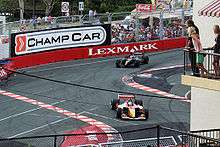
The Gold Coast 600 (formerly known as Lexmark Indy 300) is a car racing event held annually, usually in October. The course runs through the streets of Surfers Paradise and Main Beach. The GC 600 comprises many other events such as the Indy Undie Ball and the Miss Indy Competition. Formerly an Indy car event, V8 Supercars are now the headline attraction, using a similar track route, as the circuit was cut in half by a hairpin. The Magic Millions carnival is the brainchild of entrepreneurs Gerry Harvey (of Harvey Normans) and John Singleton. There are plans to relocate and build a state-of-the-art new racetrack at Palm Meadows which will incorporate the Magic Million sale with facilities for up to 4000 horses.
Each June, Coolangatta hosts the Wintersun Festival renamed as Cooly Rocks On for 2011, a two-week 1950s and 1960s nostalgia festival with free entertainment and attractions, including hot rods, restored cars and revival bands playing music of the era. Every July, more than 25,000 congregate on the Gold Coast from around the world to participate in the Gold Coast Marathon. It is also the largest annual community sporting event held on the Gold Coast. In 2015, it will be held on 4–5 July and the 37th Gold Coast Airport Marathon is set to motivate and challenge more than 25,000 people of all ages and abilities. The Gold Coast Airport Marathon will feature an event for all ages and abilities, including the full Gold Coast Airport Marathon, ASICS Half Marathon, Southern Cross University 10 kilometres (6.2 mi) Run, Suncorp Bank 5.7 kilometres (3.5 mi) Challenge, and Junior Dash over 4 kilometres (2.5 mi) and 2 kilometres (1.2 mi).
In August Currumbin hosts the annual half distance Challenge Gold Coast triathlon, with the 1.9 km swim taking place in the Currumbin River, the 90 km bike going through the Currumbin and Tallebudgera Valleys in the Hinterland, and the 21.1 km run going along the beach to Elephant Rock and Tugun.[51]
Late November to early December sees thousands of school leavers across the country descend on the Gold Coast for Schoolies, a two-week period of celebration and parties throughout Surfers Paradise, hosted by the City of Gold Coast . The event is often criticised nationally and locally for its portrayal of drinking and acts of violence, however every effort by the Queensland Police Service and State Government to ensure all school leavers have a good time are put into place, including locals volunteering by walking the streets and keeping an eye out for those in need of assistance. Early each year the Gold Coast hosts one leg of the ASP World Tour of surfing, where some of the worlds best surfers compete in the Quiksilver Pro at Coolangatta.
The Arts Centre Gold Coast located in Evandale, features a fine art gallery featuring local and international works from painting to sculpture and new media. In addition, there is a theatre for live productions including musicals as well two arts cinemas showing foreign and independent films from Australia and abroad.
Chinatown, Gold Coast, located in Southport, hosts the annual citywide Lunar New Year festival as well as regular monthly events.
Media
The daily, local newspaper is The Gold Coast Bulletin which is published by News Corporation. Newspapers from Brisbane, Sydney, Melbourne, Adelaide and Northern NSW towns such as Tweed Heads and Lismore are also available. National surfing magazine Australia's Surfing Life is published in the Gold Coast suburb of Burleigh Heads, by Morrison Media.
Television
The Gold Coast straddles the boundary between the television licence areas of both Brisbane (metro) and Northern New South Wales (regional). The Brisbane primary channels are Seven, Nine and Ten.
The regional affiliates are Prime7 (aligned with Seven), 9NBN (aligned with its owner Nine) and Southern Cross Ten (aligned with Ten). Both sets of commercial stations are available throughout the Gold Coast, as well as the ABC and SBS television services. Digital-only channels available in addition to the ones listed above include One HD, Eleven, ABC2, ABC Me, ABC News 24, SBS Viceland, 7TWO, 7mate, 7flix, 9Gem, 9Go! & 9Life. Subscription television service Foxtel is also available.
Both Nine and Seven produce local Gold Coast news bulletins. Nine Gold Coast News airs at 5:30pm weeknights, while 7 News Gold Coast airs at 5:30pm every night including weekends. Local news updates also air on Southern Cross Ten and Prime7 at various intervals. Prime Television previously produced a full half-hour local news bulletin for the Gold Coast but it was axed in 2000.
Radio
There are numerous commercial, ABC and community stations broadcasting along the Gold Coast.
The Gold Coast's FM commercial and community stations include 92.5 Gold FM and 90.9 Sea FM (both part of the Southern Cross Austereo network), Hot Tomato, Rebel FM, The Breeze, 94.1FM, Juice107.3, Radio Metro and 4CRB.
91.7 ABC Gold Coast is the local ABC station on the Gold Coast, which is complemented by the ABC's national radio services including Triple J, ABC Radio National, ABC NewsRadio and ABC Classic FM.
A number of narrowcast services are also available on the Gold Coast including Raw FM and Vision Radio.
Several Northern NSW and Brisbane AM and FM radio stations can also be received.
| Name | Frequency | Owner |
|---|---|---|
| Vision Radio | 87.8 FM | United Christian Broadcasters |
| Raw FM | 88.0 FM | Get Real Media |
| ABC Classic FM | 88.5 FM | Australian Broadcasting Corporation |
| 4CRB | 89.3 FM | CBAA |
| ABC Radio National | 90.1 FM | Australian Broadcasting Corporation |
| Sea FM | 90.9 FM | Southern Cross Austereo |
| ABC Gold Coast | 91.7 FM | Australian Broadcasting Corporation |
| Gold FM | 92.5 FM | Southern Cross Austereo |
| 94.1FM | 94.1 FM | CBAA |
| ABC NewsRadio | 95.7 FM | Australian Broadcasting Corporation |
| Triple J | 97.7 FM | Australian Broadcasting Corporation |
| Rebel FM | 99.4 FM | Rebel Media |
| The Breeze | 100.6 FM | Rebel Media |
| Hot Tomato | 102.9 FM | Hot Tomato Broadcasting Co Pty Ltd |
| Radio Metro | 105.7 FM | CBAA |
| Juice | 107.3 FM | CBAA |
Brand Ambassador
Aiysha Saagar[52][53] was the first Indian to become Brand Ambassador of the Gold Coast.
Tourism and landmarks
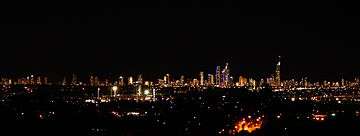
Tourism is Gold Coast City's main industry, generating a total of $2.5 billion in revenue per annum. Gold Coast is the most popular tourist destination in Queensland.[54] It is Australia's 5th most visited destination by international tourists.[55]

The city has over 13,000 available guest rooms contributing over $335 million to the local economy each year. Accommodation options available range from backpacker hostels to five star resorts and hotels. The most common style of accommodation is three and four star self-contained apartments. Tourist attractions include surf beaches, and theme parks including Dreamworld, Sea World, Wet'n'Wild Water World, Warner Bros. Movie World, WhiteWater World, Currumbin Wildlife Sanctuary, David Fleay Wildlife Park, Australian Outback Spectacular, and Paradise Country.
Since the opening of what was then the world's highest residential tower in 2005 (it is now the fifth highest), the Q1 building has been a destination for tourists and locals alike. It is the second highest public vantage point in the southern hemisphere after the Eureka Tower in Melbourne. The observation deck at level 77 is the highest of its kind in Queensland and offers views in all directions, from Brisbane to Byron Bay. It towers over the Surfers Paradise skyline, with the observation deck 230 metres (755 feet) high, and the spire extending nearly another hundred metres up. In total, the Q1 is 322.5 metres (1058 feet) high. Another famous tourist attraction are the Surfers Paradise Meter Maids, instituted in 1965 to put a positive spin on new parking regulations. To avoid tickets being issued for expired parking, the Meter Maids dispense coins into the meter and leave a calling card under the windscreen wiper of the vehicle. The Maids are still a part of the Surfers Paradise culture but the scheme is now run by private enterprise.
Chinatown, Gold Coast, is an integral part of the revitalisation of Southport as an international CBD. It is the place on the Gold Coast to celebrate diversity through culture, design, people and food.
Education
The Gold Coast's education infrastructure includes:
- Universities – Two major university campuses – Bond University at Robina and Griffith University at Southport. Both of these universities are popular options for Americans to study abroad. Southern Cross University and Central Queensland University also operate smaller campuses on the Gold Coast.
- TAFE – Five campuses at Southport, Ridgeway (Ashmore), Benowa, Coomera and Coolangatta
- Schools – Over 100 primary and secondary schools, both public and private and of a variety of denominations, including the selective state high school Queensland Academy for Health Sciences and single-sex private schools The Southport School and St Hilda's School. The longest established public school on the Gold Coast is Southport State High School, having originally opened in 1916.
Transport
Private transport
The car is the dominant mode of transport in the Gold Coast, with over 70% of people using the car as their sole mode of travelling to work.[56] A number of major roads connect the Gold Coast with Brisbane, New South Wales, and the surrounding areas. The Pacific Motorway (M1) is the main motorway in the area. Beginning at the Logan Motorway (M6) in Brisbane, it travels through the inland Gold Coast region and links with the Pacific Highway at the New South Wales/Queensland border near Tweed Heads. Before the Tugun Bypass was completed in 2008, the motorway ended at Tugun. The Gold Coast Highway services the coastal suburbs of the Gold Coast, including Surfers Paradise, Southport, and Burleigh Heads. Starting at the Pacific Motorway at Tweed Heads, it runs parallel to the coast until it reaches Labrador, where it turns inland to meet the Pacific Motorway again at Helensvale. Other arterial roads include the Smith Street Motorway, Reedy Creek Road, Nerang–Broadbeach Road and Bermuda Street.
Public transport
Public transport modes in the Gold Coast include buses, heavy rail & the new light rail for commuting to work, visiting attractions, and travelling to other destinations. The two primary pieces of public transport infrastructure on the Gold Coast are a light rail line running along the coast and a heavy rail line running inland and providing a connection to Brisbane.
Light rail
The Gold Coast's light rail service is called G:link. A 13 km (8.1 mi) line between Gold Coast University Hospital and Broadbeach connecting the key activity centres of Southport and Surfers Paradise opened in 2014. A 7.3 km (4.5 mi) extension, from the current terminus at Gold Coast University Hospital to Helensvale railway station, was announced in October 2015. The extension is expected to open before the 2018 Commonwealth Games.[57]
Heavy rail
Queensland Rail operates rail services from Brisbane to the Gold Coast along the Gold Coast railway line. The line follows the same route as Brisbane's Beenleigh railway line, continuing on after reaching Beenleigh. It then follows a route similar to that of the Pacific Motorway, passing stations at Ormeau, Coomera, Helensvale, Nerang and Robina before terminating at Varsity Lakes. An extension to Coolangatta and the Gold Coast Airport is proposed.
Bus
The Gold Coast's main provider of public bus services is Surfside Buslines.[58] It is a part of the TransLink initiative by the Queensland Government, designed to coordinate the public transport providers in Brisbane and the surrounding areas. The majority of the bus routes that Surfside operates run along the Gold Coast Highway. Services are frequent during the day, with intervals being as little as 5 minutes between Southport and Burleigh Heads.
Airport

Gold Coast Airport is located at Coolangatta, approximately 22 kilometres (14 mi) south of Surfers Paradise. Services are provided to interstate capitals and major cities as well as to major New Zealand cities, Malaysia, Japan and Singapore.
Infrastructure
Utilities
Electricity
Electricity for the Gold Coast is sourced from Powerlink Queensland at bulk supply substations which is provided via the National Electricity Market from an interconnected multi-State power system. The Government-owned electricity corporation Energex distributes and retails electricity, natural gas, liquefied petroleum gas (LPG) and value-added products and services to residential, industrial and commercial customers in South-East Queensland.
Water supply The Hinze Dam 15 km (9.3 mi) southwest of Nerang is the population's main water supply. The Little Nerang Dam which feeds into Hinze Dam can supplement part of the city area's water needs, and both are managed by the city council directorate Gold Coast Water. Reforms of the way in which the water industry is structured have been announced by the State Government, with transfer of ownership and management of water services from local government to the state occurring in 2008–09. City of Gold Coast also sources water from Wivenhoe Dam, west of Brisbane for northern suburbs when the Hinze Dam, at one-tenth of Wivenhoe's capacity, becomes low.
Water shortage and water restrictions have been current local issues, and a few new Gold Coast residential areas have recently included dual reticulation in their planning and development to supply water from a new water recycling plant being built concurrently. This will make available highly treated recycled water for use around the home in addition to potable water. The Gold Coast has received world recognition for this scheme in its Pimpama-Coomera suburbs.[59]
Gold Coast Water has also been recognised for its world leading HACCP water quality management system by the World Health Organisation which published Gold Coast Water's system as a good model for managing water quality and safety from catchment to tap.[60] The Gold Coast desalination plant, which opened in February 2009,[61] has the capacity to supply up to 133 megalitres of desalinated water per day.[62]
Projects

- The Gold Coast has been debating a controversial cruise ship terminal.[63]
- Gold Coast Rapid Transit System a light rail rapid transit system running from the currently under construction Gold Coast University Hospital to Southport via Smith, Wardoo, Queen and Nerang Streets and then to Broadbeach along the Gold Coast Highway where the first stage of the project terminates.[64] It is likely that a second stage from the Gold Coast University Hospital to Helensvale station[65] will now be constructed due to the city's successful bid to host the 2018 Commonwealth Games.
- The existing heavy rail Gold Coast line will be extended to Coolangatta.[66]
Sister cities
According to the BusinessGC Council Website, Gold Coast is twinned with:
 Beihai, Guangxi, China
Beihai, Guangxi, China Acapulco, Mexico
Acapulco, Mexico Netanya, Israel
Netanya, Israel Medellín, Antioquia, Colombia
Medellín, Antioquia, Colombia Dubai, United Arab Emirates
Dubai, United Arab Emirates Fort Lauderdale, Florida, United States
Fort Lauderdale, Florida, United States Horowhenua, Manawatu-Wanganui, New Zealand
Horowhenua, Manawatu-Wanganui, New Zealand Kanagawa, Japan
Kanagawa, Japan Takasu, Hokkaido, Japan
Takasu, Hokkaido, Japan-
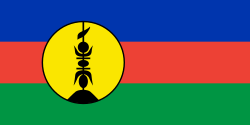 Nouméa, New Caledonia (France)
Nouméa, New Caledonia (France)  Tainan, Taiwan
Tainan, Taiwan Taipei, Taiwan
Taipei, Taiwan Ulan Bator, Mongolia
Ulan Bator, Mongolia
See also
References
- ↑ Australian Bureau of Statistics (31 October 2012). "Gold Coast (Statistical Area Level 4)". 2011 Census QuickStats. Retrieved 29 February 2016.
- ↑ "Great Circle Distance between GOLD COAST and BRISBANE". Geoscience Australia. March 2004.
- 1 2 "3218.0 – Regional Population Growth, Australia, 2014-15: Population Estimates by Significant Urban Area, 2005 to 2015". Australian Bureau of Statistics. Australian Bureau of Statistics. 30 March 2016. Retrieved 12 September 2016. Estimated resident population, 30 June 2015.
- ↑ "3218.0 – Regional Population Growth, Australia, 2013-14". Australian Bureau of Statistics. 30 June 2014. Archived from the original on 4 March 2016. Retrieved 29 February 2016.
- ↑ Gold Coast defeats Hambantota to host 2018 Commonwealth Games Archived 22 October 2014 at the Wayback Machine.
- ↑ "GOVERNMENT NOTIFICATIONS.". The Queenslander. V, (225). Queensland, Australia. 28 May 1870. p. 9. Retrieved 9 May 2016 – via National Library of Australia.
- ↑ "Country News, by Mail.". The Queenslander. VIII, (398). Queensland, Australia. 20 September 1873. p. 10. Retrieved 9 May 2016 – via National Library of Australia.
- ↑ "SIXTY YEARS AGO". The Queenslander. Queensland, Australia. 2 May 1935. p. 51. Retrieved 9 May 2016 – via National Library of Australia.
- ↑ "BEACHES NOW NOT SO GOLDEN BOOM FOR LAND IS EBBING.". Sunday Mail. Brisbane: National Library of Australia. 29 October 1950. p. 4. Retrieved 21 January 2015.
- ↑ "Talk of the Town.". Sunday Mail. Brisbane: National Library of Australia. 24 December 1950. p. 1. Retrieved 21 January 2015.
- ↑ "DAY by DAY.". The Courier-Mail. Brisbane: National Library of Australia. 28 August 1951. p. 1. Retrieved 21 January 2015.
- ↑ "DAY by DAY.". The Courier-Mail. Brisbane: National Library of Australia. 22 November 1951. p. 1. Retrieved 21 January 2015.
- ↑ "'Can get it-at a price'.". The Courier-Mail. Brisbane: National Library of Australia. 26 December 1951. p. 1. Retrieved 21 January 2015.
- ↑ "Don'ts for South Coast 1951-52.". Sunday Mail. Brisbane: National Library of Australia. 18 November 1951. p. 7. Retrieved 21 January 2015.
- ↑ "DAY by DAY.". The Courier-Mail. Brisbane: National Library of Australia. 14 November 1951. p. 1. Retrieved 21 January 2015.
- ↑ ""Gold Coast" jinks.". The Courier-Mail. Brisbane: National Library of Australia. 29 December 1951. p. 3. Retrieved 21 January 2015.
- ↑ "NSW will have own Riviera.". Sunday Mail. Brisbane: National Library of Australia. 17 February 1952. p. 5. Retrieved 21 January 2015.
- ↑ "Day by Day.". The Courier-Mail. Brisbane: National Library of Australia. 18 February 1952. p. 1. Retrieved 21 January 2015.
- ↑ "TALK of the TOWN.". Sunday Mail. Brisbane: National Library of Australia. 24 February 1952. p. 1. Retrieved 21 January 2015.
- ↑ "Agency ID2476, South Coast Town Council". Queensland State Archives. Retrieved 21 January 2015.
- ↑ "Agency ID10379, Gold Coast Town Council". Queensland State Archives. Retrieved 21 January 2015.
- ↑ Gold Coast sixth largest city John McCarthy and Greg Stolz From: The Courier-Mail 11 November 2007
- ↑ Hundloe, Tor; McDougall, Bridgette; Page, Craig, eds. (2015). The Gold Coast Transformed. CSIRO Publishing. ISBN 9781486303298.
- ↑ "Gold Coast City Council – Boating". Goldcoastcity.com.au. 17 June 2010. Retrieved 27 February 2013.
- ↑ UNESCO World Heritage Centre, Central Eastern Rainforest Reserves
- ↑ "Gold Coast Lifeguard Services". Goldcoast.qld.gov.au. Retrieved 2 July 2010.
- ↑ Queensland Shark Control Program Archived 4 May 2012 at the Wayback Machine.
- ↑ "Delft Report". Archives.qld.gov.au. 20 May 2004. Archived from the original on 27 February 2011. Retrieved 2 July 2010.
- ↑ Gold Coast Seaway Archived 30 August 2006 at the Wayback Machine.
- ↑ "Northern Gold Coast Beach Protection Strategy". Coastalmanagement.com.au. Archived from the original on 31 January 2010. Retrieved 2 July 2010.
- ↑ "Tweed River Entrance Sand Bypassing Project". Tweedsandbypass.nsw.gov.au. Retrieved 2 July 2010.
- ↑ Palm Beach Protection Strategy Archived 12 December 2007 at the Wayback Machine.
- ↑ "No Reef Campaign". Sargesdailysurf.com. Archived from the original on 13 October 2007. Retrieved 2 July 2010.
- ↑ Gold Coast Shoreline Management Plan Archived 18 February 2007 at the Wayback Machine.
- ↑ "Climate statistics for Australian locations: Gold Coast Seaway". Australian Bureau of Meteorology. Retrieved 23 January 2014.
- ↑ "Climate statistics for Gold Coast Seaway". Australian Bureau of Meteorology. April 2014.
- ↑ Councillors and Divisions
- ↑ 2012 Queensland State Election Summary Archived 28 July 2012 at the Wayback Machine.
- ↑ "Restaurant patrons started screaming, running away when brawl started, court told". ABC News. 5 May 2015.
- ↑ "Glitter Strip in grip of new crime wave". Gold Coast Bulletin. 23 August 2016.
- ↑ National Institute of Economic and Industry Research (NIEIR) November 2007
- ↑ Tourism Research Australia Domestic and International Visitor Surveys
- ↑ ABS Regional Labour Force Survey February 2009
- ↑ Gold Coast, Famous for Fun – Official Gold Coast Holidays Guide in Queensland, Australia. Visitgoldcoast.com (18 November 2012). Retrieved on 2013-07-16.
- ↑ http://www.saltwaterestate.com.au/index.php?option=com_content&view=article&id=4&Itemid=9[]
- ↑ "Film Industry on the Gold Coast". Retrieved 30 November 2014.
- ↑ "Pacific Film and Television Commission". Pftc.com.au. Retrieved 2 July 2010.
- ↑ Carson, Susan Jane. "Inside the pleasure dome : cultural tourism on Australia's Gold Coast". Queensland University of Technology. Retrieved 30 October 2016.
- ↑ Baker, S.; Bennett, A.; Wise, P. (2012). "'Living 'the Strip': negotiating neighbourhood, community and identities on Australia's Gold Coast'". Habitus of the Hood.: 96.
- ↑ City of Gold Coast | Gold Coast Cultural Precinct
- ↑ The Event Crew - Home
- ↑ Aiysha Saagar brand Ambassador of Gold Coast Times Of India
- ↑ ambassador to promote tourism and lure investors Goldcoast.com.au
- ↑ "Key Gold Coast Industries Report". Sdi.qld.gov.au. Retrieved 2 July 2010.
- ↑ "International Market Tourism Facts" (PDF). Tourism Australia.
- ↑ Australian Bureau of Statistics (27 June 2007). "Method of Travel to Work by Sex — Gold Coast (Local Government Area)" (Excel Spreadsheet). Retrieved 12 April 2008.
Consists of people who solely either drove or travelled as a passenger in a car to work.
- ↑ "Stage two of Gold Coast light rail on track for Commonwealth Games". Queensland Government. 11 October 2015.
- ↑ Surfside Bus Services Archived 28 July 2009 at the Wayback Machine.
- ↑ "Gold Coast City Council – Pimpama Coomera Master Plan Frequently Asked Questions". Goldcoast.qld.gov.au. Archived from the original on 2 January 2009. Retrieved 2 July 2010.
- ↑ "WHO | Water safety plans: Managing drinking-water quality from catchment to consumer". Who.int. 21 February 2009. Retrieved 2 July 2010.
- ↑ Kaine, Charmaine (27 February 2009). "Smooth start for Tugun Desalination Plant". ABC News. Retrieved 25 July 2009.
- ↑ WaterSecure. "WaterSecure – a new source of pure water". Archived from the original on 29 June 2009. Retrieved 26 July 2009.
- ↑ Willoughby, Shannon (4 April 2012). "Plans for Coast cruise-ship terminal". Gold Coast Bulletin. Retrieved 24 April 2012.
- ↑ "New light rail route will be a winner". 13 August 2010. Retrieved 24 April 2012.
- ↑ Ardern, Lucy (24 February 2010). "State okays Olsen Avenue light rail route". Gold Coast Bulletin. Retrieved 24 April 2012.
- ↑ Chamberlin, Thomas (14 December 2009). "Long wait for Gold Coast airport train". Gold Coast Bulletin. Retrieved 24 April 2012.
- "BusinessGC". Economic Development. Retrieved 21 July 2009.
- "Gold Coast City Council". Boating section. Retrieved 27 February 2013.
- "Australian Sisters City Association". Register of Sister Cities Affiliations (register_of_affiliations.doc). Retrieved 30 March 2005.
- "Tourism Gold Coast Local Official Website" (PDF). The Gold Coast Region (EA48E99BD71C5B381C3B294DB531EAD5.pdf).
- "Gold Coast City Council". History and Heritage Section. Retrieved 13 February 2013.
- "Gold Coast City Council Library Services". Local Studies Library. Retrieved 27 February 2013.
- "The State of Queensland (Department of State Development, Trade and Innovation)". State Development Centre, Gold Coast. Retrieved 13 August 2006.
- "Gold Coast City Council". History. Retrieved 22 November 2006.
External links
| Wikimedia Commons has media related to Gold Coast. |
| Wikivoyage has a travel guide for Gold Coast. |
- Visit Gold Coast – Official Tourism website
- Gold Coast City Council
- Gold Coast Libraries
- TransLink – Public transport – bus train ferry
- Gold Coast – Tourism Australia



